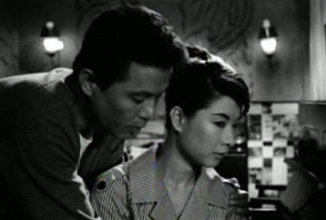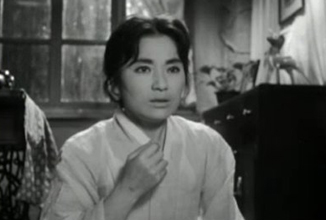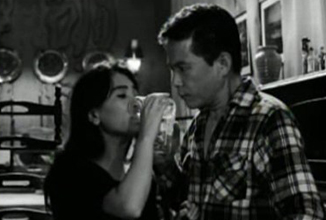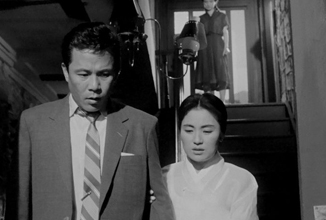The Korean New Wave. To the uninitiated, that's where it all began:
In the late 1990's, Korean cinema began to gain a worldwide reputation as a force to be reckoned with. This "Korean New Wave", or so it was called, saw the interest in (and popularity of) South Korean cinema grow exponentially in an incredibly short period of time and, in the ensuing years, names like Park Chan-wook, Bong Joon-ho and Kim Ji-woon (to name but three) began to be recognized as a new breed of filmmakers, the likes of which had rarely, if ever, been seen before, anywhere in the world.
Of course, Korea's filmmaking reputation and legacy continues to this day, however, much less widely known (but pretty obvious, if you think about it) is the fact that many years before the coining of the phrase "Korean New Wave", equally astonishing Korean films were already being made. The acclaim surrounding the 2010 film The Housemaid (directed by Im Sang-soo), has brought attention to one such cinematic gem - the original 1960 film of the same name, on which Im Sang-soo's film is based - which was previously known only to ardent cinephiles:
The Housemaid (1960, directed by Kim Ki-young) tells the story of Dong-sik (Kim Jin-kyu), a piano teacher to female factory workers; his wife (Ju Jeung-ryu), a housewife; and their two young children. Having recently moved into a newly built, two-story house in the suburbs, the family finds that Dong-sik's job is no longer sufficient to pay the ever-increasing bills, and so his wife begins taking in sewing work to supplement their income. Subsequently collapsing from overwork, she and her husband grudgingly decide that they have little option but to take on a maid to help with the household chores and one of Dong-sik's students is entrusted with the task of finding a suitable candidate.
However, the woman she finds for the job (her current flatmate) is a chain-smoking, sexual predator whose prying and self-serving nature soon presents her with a too good to miss opportunity to, almost, blackmail Dong-sik (combined with physically forcing herself on him) into an extra-marital affair.
When both the maid and Dong-sik's wife fall pregnant, a battle of wills begins between the two women, and Dong-sik finds himself caught squarely in the middle, desperate to hide his dirty laundry from the outside world and return stability to his family home...
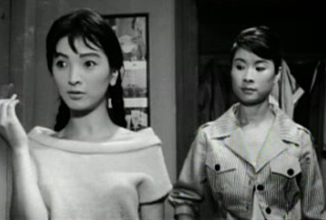 |
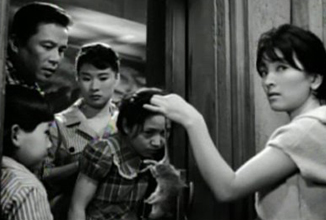 |
In the years immediately subsequent to the Korean War, an increasing Americanisation began to take place in Korea, with a greater importance being placed on the trappings of wealth, and success (and/or the appearance of being successful) began to become something to be sought and aspired to. The roles of women in society also began to change as a direct result, with many beginning to work for the first time in their lives, and director Kim Ki-young uses both of these changes in society, throughout The Housemaid, to critique the shift away from Confucianism to much less morally based Western ideals - implying that those changes were largely to blame for the disintegration of both the family in the film and family in the society-based sense.
 |
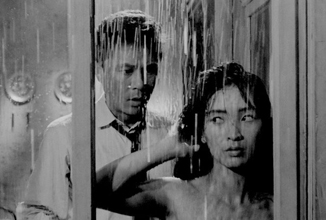 |
In the early stages of the film, a rat is repeatedly seen scurrying around within Dong-sik's home, trying to survive and escape. Clearly an analogy to the family itself, this and the repeated filming of scenes from outside the house, looking in through framed windows, gives an increasing feeling of watching rats in a cage, with the house's central staircase adding to this further by providing both a focal point to proceedings and essentially performing a similar role to a caged pet's play wheel.
Shortly after taking up her new job, the housemaid kills the aforementioned rodent, in the kitchen, with her bare hands - subsequently being told that she should have, instead, used rat poison - and it can't be denied that the rat's fate directly mirrors the outcome for the family unit, once again at the hands of the housemaid.
Note should also be made of the opening credits, which play over a scene showing the family's two children playing a game of Cat's Cradle with a length of string. As their game builds in speed, the patterns they create become increasingly complex and twisted, as does the tangled web weaved by the main characters themselves.
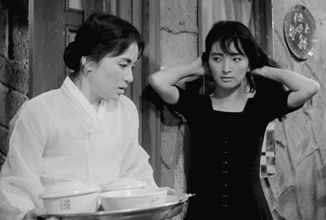 |
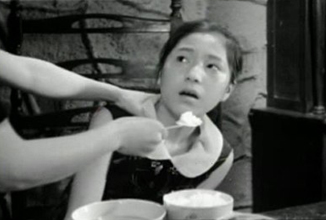 |
Cinematically, The Housemaid is deeply claustrophobic, both visually and in terms of plot, increasing in tension as the story darkens, to an almost uncomfortable level. Characters are repeatedly framed with nowhere to escape to, closed in both by physical frames within the house and by the camera frame itself, with the viewpoint routinely moving to keep them "trapped" wherever they are. This technique will be fairly well known to any cinema fan, but its appearance in a film made at a time when Kim Ki-young's contemporaries were mainly known for melodramas filmed using wide (mainly static) shots, makes its use here even more extraordinary.
Also peppered within this dark morality tale are many nuanced moments of humour, and the influence this film has had on some of today's Korean filmmakers (most notably Bong Joon-ho and Park Chan-wook, who have both cited it as a major influence) is hard to ignore.
Overall, the directing could easily be compared to Hitchcock works from the same era - one scene in particular, involving a glass of water, brings to mind a similar scene in 'Suspicion' (1941), albeit minus the eerie glow at the bottom of the water/wine glass.
However, where The Housemaid steps away from Hitchcock is in the level of sexuality portrayed. The lasciviousness shown by several of the characters takes, pretty much, centre stage from the very beginning of the film right through to, almost, the conclusion and, even today, the levels alluded to feel in no way reigned in or dated - especially note-worthy considering that this film was made fifty years ago.
At the time of The Housemaid's original release, it is claimed that married women were storming out of cinema screenings or yelling abuse at the character of the housemaid on screen and, with the intensity of emotions portrayed, and the levels of immorality contained within the film, that really isn't hard to believe.
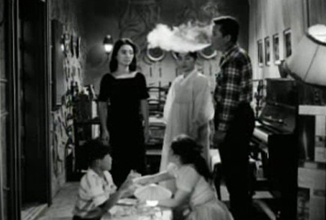 |
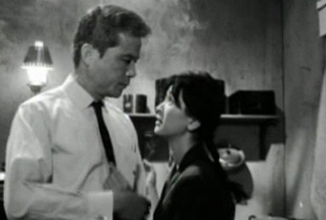 |
Cast:
The entire cast give believable and impassioned performances throughout, but special note should be made of Lee Eun-shim's portrayal of the housemaid herself:
Her wantonness is almost palpable and, from the very first moment she appears on screen, there is no doubt whatsoever that the "games" are about to begin. In fact, her performance was so convincing that she faced a huge backlash from cinema viewers at the time (once again, mainly married women), resulting in a reluctance, by filmmakers, to cast her in their later films.
Sadly, her acting career almost completely ground to a halt and never managed to recover.
Summary:
A claustrophobic, yet gripping, morality tale, The Housemaid is as vital today as it was on its release fifty years ago. No wonder that both Bong Joon-ho and Park Chan-wook have cited it as a major influence on their work.
The version of The Housemaid used for this review is the re-mastered print, streamed free on the Mubi online cinema website (mubi.com).
The re-mastered print has also recently been released as a Special Edition DVD (released by the Korean Federation of Film Archives) and is available from all reputable Region 3 DVD retailers.
Actors: Kim Jin-kyu, Ju Jeung-ryu, Lee Eun-shim, Um Aing-ran, Ahn Seong-gi
Director: Kim Ki-young
Aspect Ratio: Full Screen (presented as 1.54:1), Black & White
Language: Korean
Subtitles: English
|


